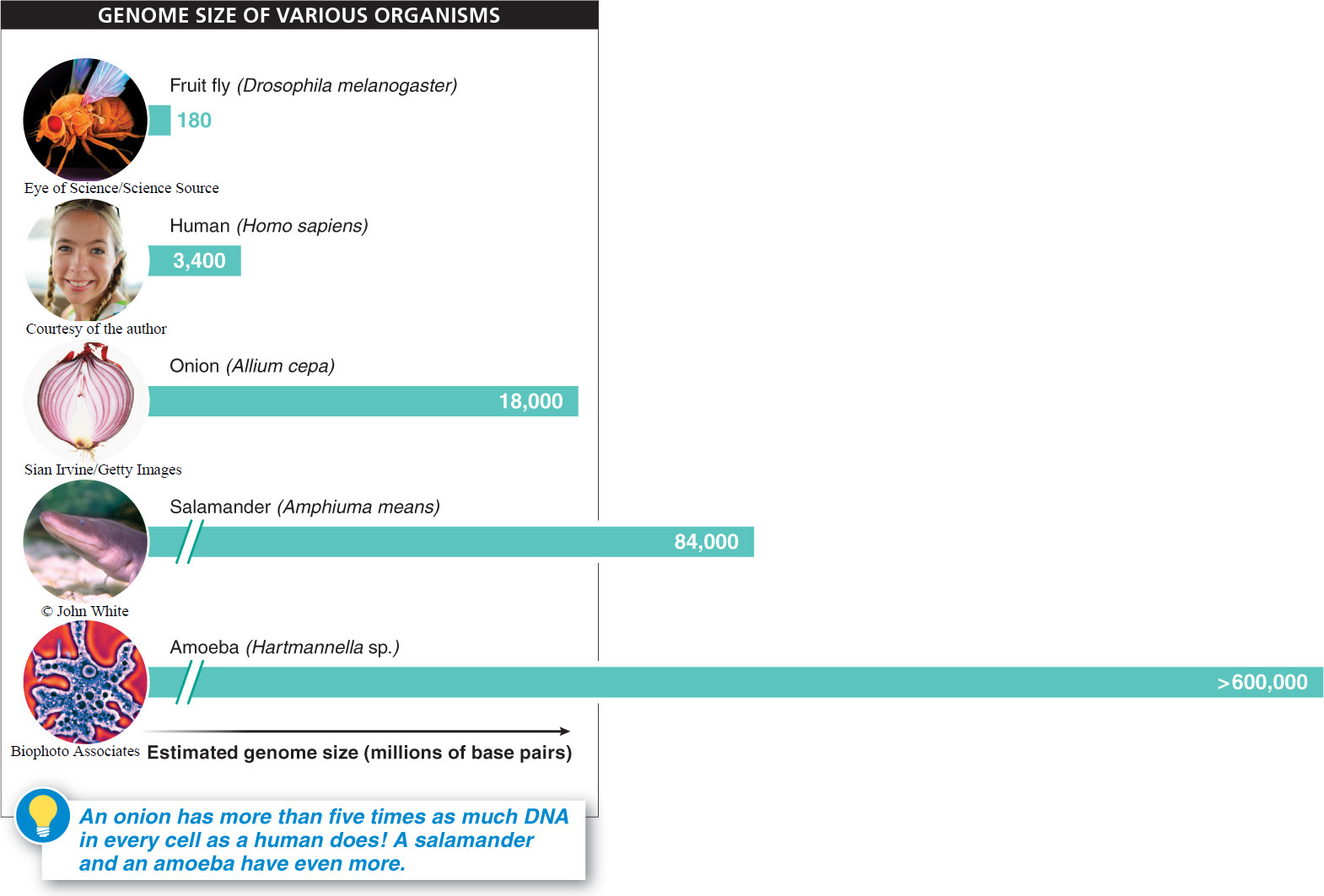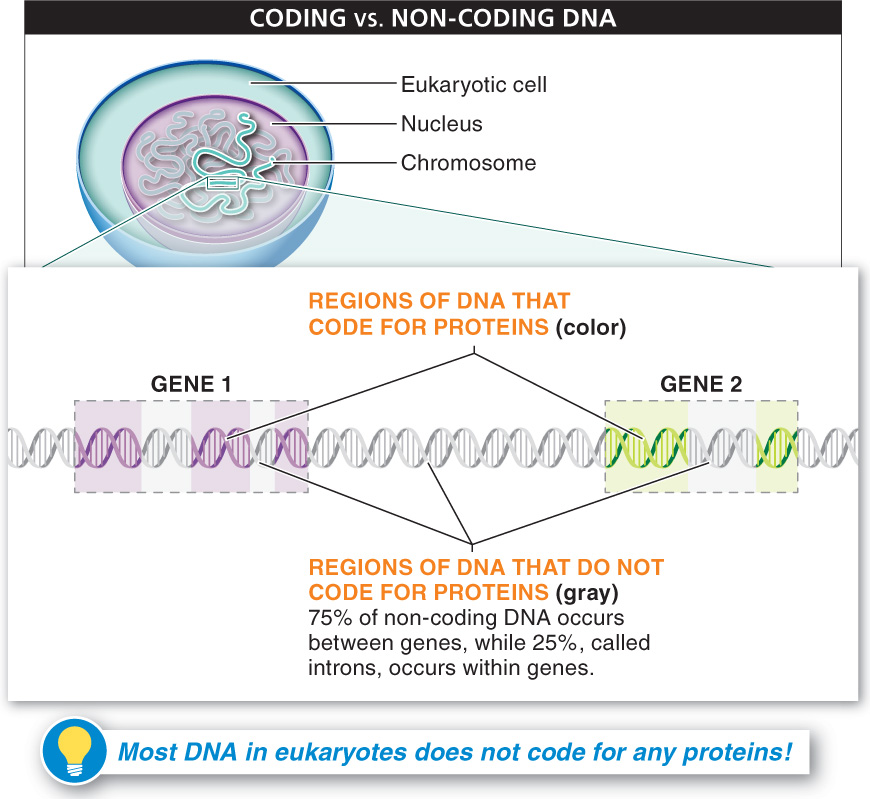An onion has five times as much DNA as a human. Why doesn’t that make onions more complex than humans?
It is debatable whether humans are the most complex species on the planet, but surely we must be more complex than an onion. “Complexity” is somewhat subjective and can be assessed in a variety of ways, such as by counting the number of different cell types in the organism. But if we measured complexity simply as the amount of DNA an organism has, we’d have to say an onion is more complex—

Comparing the amount of DNA present in various species, in terms of both numbers of chromosomes and numbers of base pairs, reveals a paradox: there does not seem to be any relationship between the size of an organism’s genome and the organism’s complexity.
185
The description earlier in this chapter about what DNA is and how genes code for proteins is logical and tidy, but it doesn’t completely explain what we observe in cells. In humans, for example, genes make up only about 2% of the DNA (FIGURE 5-9). In many species, the proportion of the DNA that consists of genes is even smaller. In almost all eukaryotic species, the amount of DNA present far exceeds the amount necessary to code for all of the proteins in the organism. The fact is, a huge proportion of the base sequences in DNA do not code for proteins and have no known purpose. When it was first observed, some biologists even referred to this non-

In what types of organisms do we find the most “junk DNA”? Bacteria and viruses tend to have very little non-

In the end, the presence of this non-
TAKE-HOME MESSAGE 5.4
Only a small fraction of the DNA in eukaryotic species is in genes that code for proteins; the function of much of the rest is still poorly understood, although at least some of it plays important roles in the cell, such as gene regulation.
Genes make up approximately what fraction of human DNA? What fraction of bacterial DNA?
Genes make up less than 5% of human DNA, but make up over 90% of the DNA of bacteria.
186